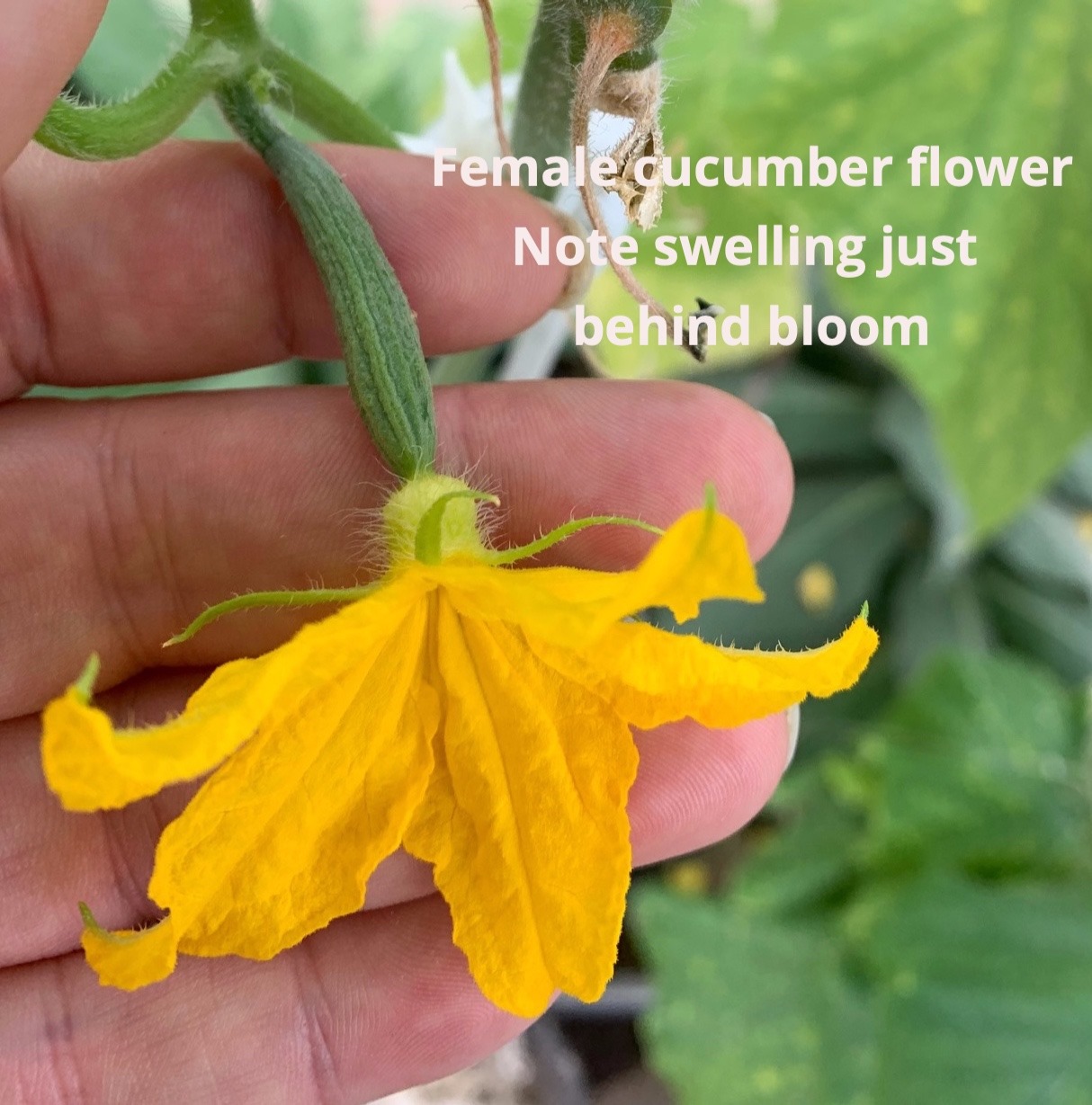
Blossom drop and pollination problems in cucurbits (cucumbers, pumpkins, melons, squash, cantaloupe)
reduces yield

Are your cucumbers losing their flowers? Do they get tiny little cucumbers that just die off?
This a common problem with cucumber and their relatives like winter squash, zucchini, pumpkin, melon and cantaloupe. There are many causes:
- Male flowers normally outnumber female flowers by about 3 to 1. Sometimes these plants will produce a lot of one sex of flower for a week or two when they start blooming. The other sex usually appears shortly afterward.
- Plant stresses can cause plants to drop flowers prematurely such as:
- transplant shock
- root disturbance (often happens when transplanting)
- under/over watering
- too much nitrogen fertilizer
- very hot temperatures, cool temperatures or temperature fluctuations
- overcrowded plants
- not enough sunlight
If your plants seem healthy otherwise, it could be a pollination problem. These plants have both male and female flowers on the same plant. Usually flying insects like bees do the job of pollination. Breezes help with pollination too. However, if the plants are planted closely together or are in a protected spot, they may not pollinate successfully. Weather can play a role too: pollinators tend not to fly as much in cool, wet or windy weather. Insecticide use can kill pollinators like bees.
You can help pollinate your plants. Here's how:
- Female flowers are easy to identify they always have a tiny fruit just behind the flower. (Photo at right) This is the ovary. After pollination, the flower fades, falls off and the fertilized ovary develops into the fruit. Female flowers have a stigma in the centre of the flower, which looks like a cluster of bumps around a central opening. This is the part that receives the pollen.
- Male flowers lack the tiny fruit behind the flower and tend to have shorter stems. They also have a long anther in the centre of the flower that contains the pollen as shown in the photo above.
- Using a small brush or cotton swab, dab the centre of a male flower. The pollen will stick to the paintbrush as it would on a bee. Transfer the pollen to the centre of the female flowers.
- Alternatively, for larger blossoms like squash or zucchini, simply peel back the petals of the male flower and transfer the pollen directly.
- Repeat for all of the flowers.
Source
http://www.missouribotanicalgarden.org/gardens-gardening/your-garden/help-for-the-home-gardener/advice-tips-resources/pests-and-problems/environmental/pollination/pollination-problems-of-cucurbits.aspx
